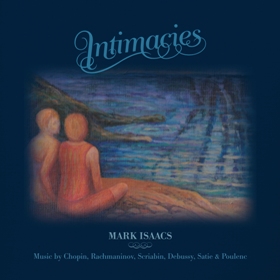MARK ISAACS: SOLO PIANO “NEW STANDARDS” – Brisbane Thursday October 12, 2023
October 12 @ 8:00 pm – 10:00 pm
JMI Live, 10 Exhibition St, Bowen Hills, Brisbane
$20
More information & bookings here.
Mark Isaacs’ solo piano program is a reimagining of much-loved classic melodies. All are new-to-jazz choices from the 1960s & 70s including by songwriters such as Paul McCartney, Joni Mitchell and the late Burt Bacharach.
“Isaacs, with every release, has refined his systematic approach to post-modernity jazz to the point that his sound defines what jazz should sound like at the advent of the 21st Century” – ALL ABOUT JAZZ (USA)
“Here were dialogues to restore the faith. As the world crumbles into vulgarity, vitriol and worse, one felt blessed – privileged, even – to hear solo performances by pianists of the calibre of Mark Isaacs” – SYDNEY MORNING HERALD
“He wrestled melody and song out of silence” – AUSTRALIAN BOOK REVIEW
“The audience was silent and motionless, spellbound – somewhere between awe and anticipation” – CLASSIC MELBOURNE
Mark Isaacs writes symphonies, concertos, records and performs as a classical pianist and conducts orchestras. He’s composed and conducted film & TV music and even writes songs (including the lyrics).
Classical music luminary Vladimir Ashkenazy described Mark’s classical work as “masterful” and “highly inventive and inspiring”.
Alongside all this, his brilliant jazz output, over more than four decades now, has seen him collaborating with some of the most legendary international jazz stars, including Roy Haynes, Dave Holland and Kenny Wheeler, recording numerous lauded jazz albums (with two ARIA Award nominations for his previous Australian ‘Resurgence’ band), and touring the world including playing major festivals such as Tokyo Jazz Festival and Finland’s Pori Jazz.
Jazz master Pat Metheny described Mark as “A serious musician looking to solve deep questions” and the Los Angeles Times spoke of his “splendid musical mind”.
Mark Isaacs’ solo shows in Sydney and Melbourne major performance venues like Melbourne Recital Centre and City Recital Hall, Sydney, have received glowing reviews.
Now he presents a unique program of his own individual solo piano takes on “standards”, or “heritage” melodies from the worlds of jazz, film, Broadway, pop and occasionally ‘folkloric’ songs.




